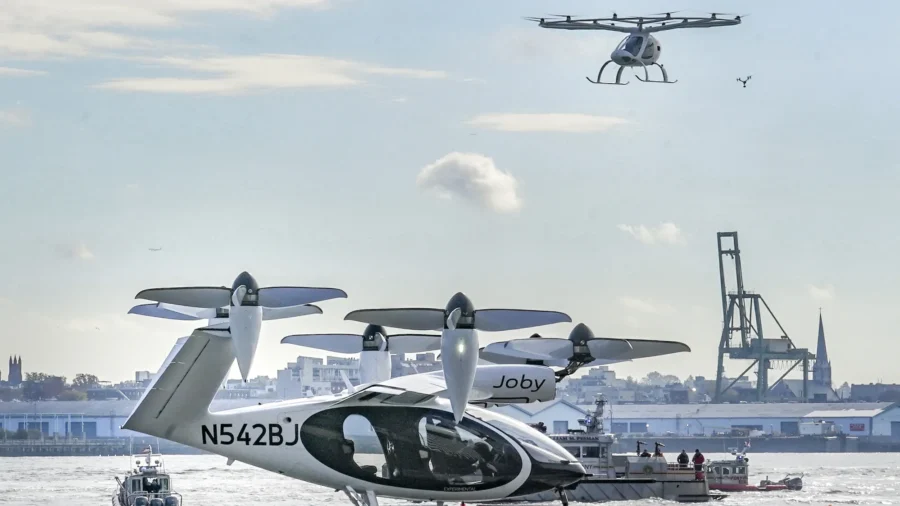Federal regulators have taken a big step toward integrating electric-powered air taxis into the national airspace after issuing a final rule Tuesday outlining operational guidelines and pilot training requirements for the aircraft.
According to Mike Whitaker, head of the Federal Aviation Administration (FAA), the new rule acknowledges air taxis as a distinct category of aircraft, marking the first introduction of a new aircraft category in nearly 80 years since helicopters were introduced.
He said “powered-lift aircraft” will soon join airplanes and helicopters in the skies on a large scale and emphasized the agency’s commitment to safety.
Air taxis, which take off and land vertically like helicopters but fly like fixed-wing planes, have been under development by numerous companies, but their commercial rollout has been delayed due to regulatory uncertainties.
The FAA’s final rule aims to address these issues by providing a clear framework for their operation, the agency said Tuesday.
The rule introduces permanent amendments and a Special Federal Aviation Regulation (SFAR) to facilitate pilot certification and clarify operating rules for “powered-lift” operations.
According to a draft of the final rule, the FAA has adopted alternate requirements for certifying pilots and instructors, allowing them to operate air taxis with single-functioning flight controls and a single pilot station.
Industry leaders have welcomed the FAA’s decision.
JoeBen Bevirt, CEO of California-based Joby Aviation, said the regulation “will ensure the U.S. continues to play a global leadership role in the development and adoption of clean flight.” Joby Aviation is among several companies actively developing air taxi technology.
Some airlines have shown interest in air taxis to transport passengers to airports more efficiently.
Delta Air Lines announced in 2022 its intention to invest $60 million in Joby Aviation, while Toyota recently committed $500 million to support the company’s efforts.
United Airlines is backing Archer Aviation and plans to order 200 aircraft, potentially worth $1 billion, with an option for an additional $500 million.
Used for Various Purposes
According to the FAA’s final rule, powered-lift vehicles are “heavier-than-air aircraft capable of vertical takeoff, vertical landing, and low-speed flight that depends principally on engine-driven lift devices or engine thrust for lift during these flight regimes.”
The vehicles are expected to be used for various purposes, such as transporting crew and materials to offshore oil rigs and serving as air ambulances in cities, according to the agency.
According to a report by the U.S. Government Accountability Office (GAO), air taxis could be easier to design, simpler to construct, quieter to fly, and more economical compared to traditional airplanes and helicopters.
The Associated Press contributed to this report.

